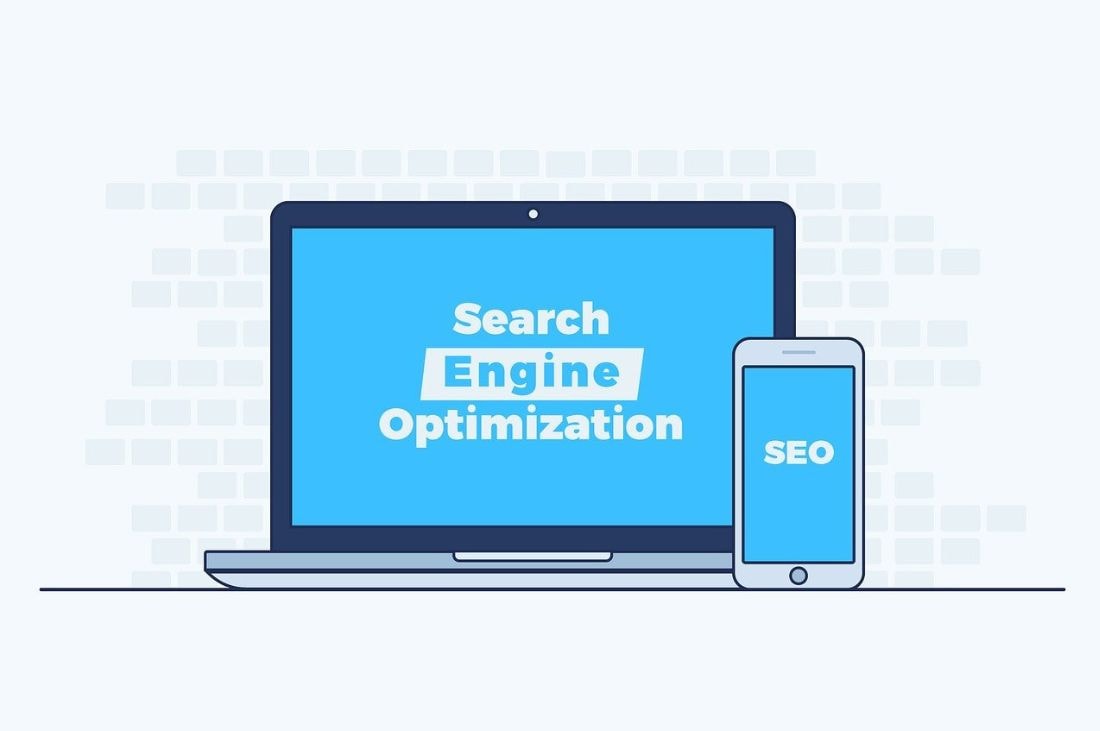9 Tips How to Humanize AI Content

Skip ahead
9 Tips How to Humanize AI Content

AI content tools have taken the marketing world by storm, with over 47% of marketers now using them to generate content. But this growing trend of relying on AI-generated text can jeopardize a brand's uniqueness in the long run, and readers may even wonder if the business has lost its own personality.
That's where humanizing AI text comes into play. It lets marketers enjoy the speed and efficiency of AI content creation while keeping their brand voice alive and building trust with their audience.
Let's break down how you can transform robotic AI text into engaging, human-like writing that truly connects with your audience.
How to Humanize AI-Written Text
If you're a marketer or a content creator, chances are that you turn to an AI text generator every time you want to write new content. While these tools are incredibly fast and efficient, relying on them heavily can make your content feel generic and less relatable to readers. So, does that mean you should switch to human writing completely? Not at all.
There are many ways to humanize AI-generated text to get the best of both worlds. Here are a few simple steps to help you get started.
Step 1: Identify and Remove Generic Statements
The first thing AI detection tools look for in text is generic statements that add zero value. So, scan your AI-generated text for sentences that don't add meaning, sound repetitive, or are simply filler text. Replace them with specific and actionable points that bring value to the reader.
Example:
Before: "Social media is important for businesses because it helps them grow."
After: "Businesses should have a strong social media presence, considering that almost 58% of consumers find new businesses through these platforms."
Step 2: Switch to a Conversational Tone
AI text generators have a robotic tone and can sound overly formal and unnatural. To fix this, rewrite the content in a conversational tone that feels relatable to the reader. They should feel like they're reading human text, so use different sentence structures and lengths to keep the reader engaged.
Example:
Before: "It is necessary to leverage social media platforms to reach a larger audience."
After: "Do you want your brand to get noticed? Start by showing up on your audience's favorite social platforms."
Step 3: Make the Message Personal
AI can write a solid copy, but it cannot add human emotions to the writing. That's where you come in. Add personal touches to the text, such as anecdotes and real-life examples, rather than simply stating facts. Make sure that your text connects with the reader and feels genuine.
Example:
Before: "Our company has a customer-first approach."
After: "You're at the heart of everything we do, starting from the way we build our brand to how we serve you every day."
Step 4: Refine and Review
Once you've followed the above steps, take a step back and check the changes. Does the content sound more natural? Does it deliver your message clearly? Does it resonate with your brand's voice? Make more adjustments if needed without compromising on flawless writing.
Example:
Before: "AI tools can help with content writing."
After: "Our marketing team uses AI assistance for content generation, but the final message is crafted to feel personal and uniquely human."
Step 5: Use an Advanced AI Detector to Check the Text
The final step is to check your humanized text with an advanced AI detector to make sure you've reached your goal. Tools like Winston AI, Originality.AI, and GPT Zero can check the humanized AI writing and highlight any parts that still feel like AI-generated content. Tweak those sections until the text feels fully natural.
Use an AI Humanizer Tool
Turning AI text into human-like content isn’t difficult once you know the right approach. Still, when deadlines are tight and content needs to be produced in bulk, the process can feel overwhelming. If you’re in that spot, don’t worry because AI can actually help you convert AI-generated content into humanized text, too.
Now, you might be wondering: Is using AI to fix AI really a good idea? The short answer is yes — and here’s why it works.
- It checks the text for robotic tone and overly formal sentences.
- It rewrites sentences to ensure a more natural flow.
- It swaps cliches and generic text with content that enriches the core message.
- It improves readability by combining short sentences and breaking longer ones into simpler forms.
- Some AI humanizer tools allow you to adjust the tone of the text, allowing the message to sound more personal.
Best AI Humanizer Tools
Many AI human text converters can help make your content sound natural and personalized. While some of them are free online tools, others offer this feature in premium versions. Here's a list of some of the best AI humanizers you can try.
- StealthGPT
- Humanize AI
- Quillbot
- WriteSonic
- Grammarly AI
- Stealthwriter.AI
- 9 Tips On How To Humanize AI Content

Are AI tools your go-to for writing? We get the hype, but relying on them as your final copy can sometimes backfire — both with readers and search engines. You can use a free AI humanizer tool to make your text more natural, or follow these tips to create authentic, engaging content that preserves your brand voice while keeping search algorithms happy.
1. Personalize your Prompts
AI-generated text is only as good as the prompt you write in the input box. That’s why it pays to spend a little extra time crafting detailed, specific prompts.
Start by sharing the basics, your content requirements, word count, and preferred format. Then, specify the tone you want, whether it’s professional, conversational, or sprinkled with humor. The more precise you are, the better the AI model will understand your brand voice and produce content that truly reflects it.
Example:
Before: "Write 600 words about the benefits of remote work."
After: "Write a blog post of 600 words on the benefits of remote work. Divide the content into four subheadings, real-life examples, and a summary at the end. Explain content through bullet points in two of the subheadings. Keep the tone conversational but not too casual."
2. Add Stories or Personal Experiences
The biggest giveaway of an AI-generated draft is its lack of personality. So, the best way to humanize AI writing is by adding stories and real-life experiences that make the reader feel they're connected to a real human, not a machine.
Share your expertise and insights on the topic, and explain how your product or service stands out from competitors. These personal touches not only make your AI text more relatable but also build trust and authority with your audience.
Example:
Before: "Our software helps businesses save time and increase efficiency."
After: "When we started using our software in-house, we were able to cut processing time by 30%, completing a two-hour task in just 85 mins. Our clients agree say the same that it frees their teams to focus on the big picture instead of getting bogged down by repetitive tasks."
3. Check Facts and Add Statistics
AI-generated content isn’t always factually accurate. While AI models use advanced algorithms to compile and present information, they can still make mistakes.
Unlike human writers, AI doesn’t truly understand context or meaning, which can lead to inaccuracies. That’s why it’s crucial to fact-check AI-generated content against credible sources before publishing. Few things turn readers away faster than false information, so do your due diligence.
Example:
Before: "According to recent studies, 70% of businesses have completely replaced human writers with AI tools."
After: "Research shows that AI now handles 68% of repetitive writing tasks, including product descriptions, basic social media posts, and standard emails."
4. Use First-Person Pronouns
One of the main reasons AI text sounds generic and impersonal is its lack of first-person pronouns. That's also why AI-generated drafts don't usually tie into Google's EEAT (Experience, Expertise, Authoritativeness, Trustworthiness) framework.
A quick way to humanize AI text is to replace generic terms with first-person pronouns, while still feeling natural. Using words like I, we, us, our in your sentences makes readers feel as if a real person is talking to them. This builds trust and creates a brand voice that feels welcoming and reader-focused.
Example:
Before: "Regular exercise is important for maintaining good health and boosting energy levels."
After: "If you want to feel healthier and more energetic, start exercising regularly. I committed to just one hour a day for 30 days, and I've never felt better."
5. Look for Overused Words/ Terms
Generative AI favors certain generic words and phrases, which means you'll find them repeatedly in your AI text. As you review your content, highlight any terms that feel overused or oddly formal for the topic. Remove these words or replace them with more specific terms and natural wording.
According to GTPZero, AI models like ChatGPT, Gemini, and Claude frequently use words and phrases like:
- provide a valuable insight
- left an indelible mark
- play a significant role in shaping
- an unwavering commitment
- open a new avenue
- a stark reminder
- play a crucial role in determining
- finding a contribution
- finding a shed light
So, if you see any of the above phrases in your AI writing, swap them out for natural and more human expressions to make your content feel original.
6. Mix Up Sentence Length and Structure
AI tools write passages where all sentences are roughly the same length— something you won't find in human writing. Another tell-tale sign of AI-generated text is awkward or complicated sentences. When humans write, they use a mix of long and short sentences, creating a rhythm that feels dynamic and more impactful. They also break down complex ideas into simple, easy-to-read language.
Try to recognize these sentence patterns in your AI text and edit them to make the passage sound natural and human-like. Vary sentence length and simplify long phrases so the passage flows naturally.
Example:
Before: "With the increasing adoption of digital tools, businesses are seeking ways to streamline their operations while also improving efficiency. This often involves implementing automation software that can handle repetitive tasks and reduce manual effort, allowing employees to focus on more strategic initiatives that drive growth and innovation."
After: "As more businesses go digital, the shift towards automation software adoption seems only natural. It handles repetitive tasks, reduces manual errors, and improves work efficiency. The best part? It frees up time so employees can focus on growth strategies and innovation."
7. Remove Fluff and Cliches
AI text often uses filler phrases and cliches that don't add any real value to the content. Here are a few phrases you'd encounter in most AI-generated text:
- At the end of the day
- In today's fast-paced world
- State-of-the-art
- Hit the ground running
- Only time will tell
- Think outside the box
- Game-changer
- Win-win situation
- Take it to the next level
These phrases make your content sound generic and forgettable. Instead, focus on improving clarity and authenticity. If a phrase or sentence doesn't inform, persuade, or entertain the reader, remove it from the passage.
8. Adjust The Voice and Tone
AI-generated text often leans on passive voice, which makes it sound monotonous, boring, and overly formal. You can humanize the AI text by switching the voice from passive to active, turning it into a more dynamic and personal conversation.
You can also alter the content's tone from formal to conversational so it reads as if you're directly talking to the reader. This simple tweak instantly makes the AI writing more engaging and helps your audience feel genuinely connected to the message.
Example:
Before: "The report was completed by the team ahead of schedule, and the results were presented to management during the weekly meeting."
After: "Our team completed the report ahead of schedule and shared the results with the management in this week's meeting."
9. Edit like a Human
Always treat AI-generated text as your first draft, not a ready-to-publish post. You are the best AI humanizer, so roll up your sleeves and edit like a pro. Refine the content to match your brand’s voice, making sure it feels engaging and authentic. Cut out any fluff or filler sentences and replace them with personal insights that connect with your audience.
The goal is simple: your AI-generated text should read as if a real person wrote it.
Example:
Before: "Investing in wood furniture is a smart choice for anyone looking for style and longevity. Unlike cheaper materials, solid wood pieces are incredibly durable and can last for decades — sometimes even becoming heirlooms. Plus, high-quality wood furniture can even appreciate over time, making it not just a purchase, but an investment in both comfort and craftsmanship."
After: "Are you looking for furniture that lasts for generations? If yes, then wood furniture is the perfect purchase you can make today. Solid wood pieces aren't just durable, but they also appreciate over time, turning into precious heirlooms your family will cherish."
Why Is Humanizing AI-Generated Content Necessary?

There's a remarkable surge in AI-generated text among marketers and content creators. The key driver behind this is the rapid advancement of machine learning models. Once bland and generic, modern AI writing tools can understand context, switch tones, and generate text that sounds natural and engaging.
With AI assistance, the time and effort spent to create content is reduced significantly, allowing users to scale their brand easily. But while it's a great starting point, not humanizing AI text can make a brand lose trust and credibility among readers.
Here are a few reasons you should always humanize your AI-generated drafts.
To Improve Reader Engagement
People connect with people — not machines. That’s why AI-generated text alone rarely creates a real bond with readers. By adding personal touches like stories, relatable examples, and a bit of human charm, your audience notices the effort behind your content. This encourages them to read, share, and engage with what you publish.
To Increase Brand Credibility
Sharing valuable insights and demonstrating your expertise naturally builds trust with readers. Providing accurate data, sharing real experiences, and maintaining a consistent brand voice all work together to strengthen your brand’s credibility.
To Boost SEO Performance
Search Engine Optimization (SEO) boosts your brand’s visibility and helps attract the right audience. However, AI text alone doesn’t guarantee strong SEO performance. By humanizing your content, you can naturally integrate keywords while ensuring the text effectively answers users’ questions and solves their problems.
To Amplify Your Brand Voice
Your brand voice is what makes your business unique. Publishing AI-generated drafts without a human touch can make you lose that identity. By humanizing your content, you ensure your brand’s personality shines through in every message, making it more memorable and impactful.
Can Search Engines Detect AI Content?

Just like human readers, search engines can also recognize the difference between AI-generated and human-written text. But AI detection doesn't mean engines will not prefer its content over human counterparts.
Google and other search engines have a fair ranking system that favors original and high-quality content. Whether your text is written by a human, generated by AI, or a mix of both, what matters most is that it demonstrates qualities of EEAT (Experience, Expertise, Authoritativeness, and Trustworthiness) and satisfies user intent.
Does Google Penalize AI Content?
No, Google doesn't penalize content just because it's AI-generated.
Google rewards helpful content that provides real value, whether it's human-written or generated with artificial intelligence. However, if content is created solely to manipulate rankings or is of low quality, it violates Google’s spam policies and could be penalized.
That’s why humanizing AI-generated text matters. Not only does it reduce the risk of penalties, but it also improves your chances of ranking well by creating content that’s reader-focused and engaging.
Key Takeaways
There’s no denying that AI writing tools are incredibly smart. They can produce content faster than human writers and help scale a brand without the extra cost of hiring more staff. But speed alone doesn’t guarantee that your audience will connect with the content.
The key is to add a human touch to every AI-generated message, ensuring it aligns with your brand voice and resonates personally with readers. After all, people crave real human connections.

















